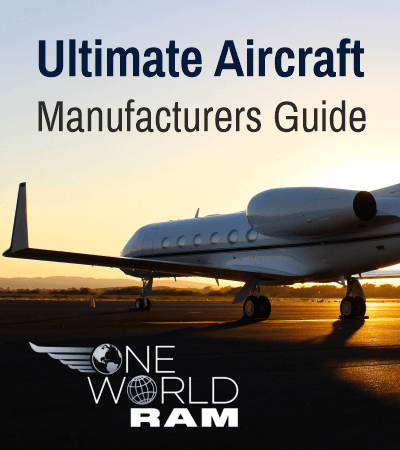Discover the remarkable legacy of the Piper PA-32, an aircraft that revolutionized general aviation with its exceptional versatility and reliable performance. From its humble beginnings as the Cherokee Six to its final production run in 2007, this six-seat marvel has left an indelible mark on aviation history.
The Piper PA-32, originally known as the Cherokee Six, emerged as a groundbreaking addition to general aviation. This six-seat aircraft, developed as an expansion of the successful PA-28 Cherokee line, combined increased passenger capacity with Piper’s renowned reliability. Manufactured in the United States from 1965 to 2007, it quickly established itself as an aviation industry cornerstone.
The aircraft’s distinctive features include:
- Low-wing configuration for enhanced stability
- Fixed landing gear in most variants for simplified maintenance
- Spacious cabin design for maximum comfort
- Substantial cargo area for versatile operations
- Impressive payload capacity for diverse mission profiles
History and Development of the Piper PA 32
The mid-1960s marked the beginning of the PA-32’s journey, as Piper Aircraft sought to expand its Cherokee line. The inaugural Cherokee Six flight in 1965 addressed the PA-28’s limitations by offering enhanced interior space and payload capacity. This strategic expansion solidified Piper’s position as a leading general aviation manufacturer.
Throughout its development, the PA-32 underwent several significant innovations:
- Experimental wing-mounted IO-360 engines in prototype PA-32-260
- Advanced avionics system upgrades
- Enhanced powerplant configurations
- Refined aerodynamic improvements
- Modernized cockpit layouts
Key Features of the Piper PA 32
| Feature | Description |
|---|---|
| Construction | All-metal, unpressurized design for durability |
| Cabin Configuration | Six-seat capacity with flexible seating arrangements |
| Landing Gear | Fixed tricycle configuration for stable ground operations |
| Wing Design | Low-mounted for predictable handling characteristics |
| Power Output | 260 horsepower in PA-32-260E variant |
Performance and Capabilities of the Piper PA 32
The PA-32 series has distinguished itself through exceptional performance metrics and operational versatility. Different models offer varying capabilities, with the PA-32-260 and PA-32-300 variants standing out for their operational efficiency and reliability across diverse flight conditions.
Engine and Fuel Efficiency
The PA-32’s powerplant configuration demonstrates impressive efficiency metrics:
- 260-horsepower piston engine in PA-32-260 models
- Fuel consumption rate of 14.0 gallons per hour (GPH)
- Optimized engine compartment design for easy maintenance
- Available aftermarket modifications for performance enhancement
- Balanced power-to-efficiency ratio for economic operation
Flight Range and Speed
The Piper PA-32 showcases exceptional range capabilities that set it apart in medium to long-distance travel. The PA-32-260D achieves a maximum range of 834 nautical miles under optimal conditions, enabling pilots to complete most regional journeys without intermediate fuel stops. While actual range varies based on several factors, the aircraft maintains consistent performance advantages over its competitors.
- Maximum range – 834 nautical miles
- Best cruise speed – 137 KIAS (157 mph)
- Fuel efficiency at cruise power
- Variable range based on conditions
- Available performance modifications
The speed characteristics of the PA-32 demonstrate an optimal balance between cruise efficiency and practical travel times. At 137 KIAS, the aircraft delivers reliable performance while maintaining fuel efficiency. Pilots seeking enhanced performance can explore various aftermarket modifications, though these must adhere to strict regulatory standards and safety protocols.
Pilot and Owner Experiences
The Piper PA-32 series has earned widespread acclaim among aviation enthusiasts for its exceptional versatility and reliability. With over four decades of production history, the aircraft has established itself as a dependable workhorse, combining impressive payload capacity with operational flexibility. The predictable handling characteristics make it particularly appealing to pilots transitioning from smaller aircraft while maintaining the capability to accommodate larger groups and substantial cargo loads.
| Aspect | Owner Benefits |
|---|---|
| Investment Value | Strong residual values and long-term returns |
| Operational Versatility | Suitable for family, business, and commercial use |
| Maintenance | Straightforward requirements and robust systems |
| Adaptability | Diverse mission capabilities |
Pilot Reviews and Testimonials
Regular PA-32 pilots consistently highlight its stable flight characteristics and forgiving nature. The aircraft delivers a solid, confidence-inspiring feel, particularly valuable in turbulent conditions. Commercial operators praise its consistent performance even at maximum gross weight, while experienced bush pilots commend its predictability in challenging environments.
Flight instructors note the aircraft’s manageable transition for pilots with appropriate experience, maintaining many of the handling qualities that made the PA-28 series popular. Key advantages include excellent cockpit visibility, responsive controls, and outstanding stability for instrument flying, making it a preferred choice for varied weather operations and diverse airport environments.
Maintenance and Upkeep Tips
- Regular oil analysis for early problem detection
- Consistent inspection of landing gear components
- Monitoring of control surface hinges
- Regular cabin door mechanism maintenance
- Detailed maintenance record keeping
- Corrosion inspection, especially for coastal operations
- Phased avionics modernization approach
Training and Certification for the Piper PA 32
Mastering the Piper PA-32 demands comprehensive training and proper certification, reflecting its enhanced capabilities and operational characteristics. While it shares heritage with the PA-28 Cherokee series, the PA-32’s increased specifications require additional pilot proficiency. Specialized training programs are widely available through flight schools internationally, offering structured pathways for transition to this versatile aircraft.
The training process encompasses thorough ground instruction covering systems knowledge, performance limitations, weight and balance calculations, and emergency procedures. This theoretical foundation supports practical flight training, addressing various operational aspects from basic maneuvers to advanced operations, ensuring pilots can maximize the aircraft’s impressive capabilities safely and efficiently.
Flight Training Programs
Flight training programs for the Piper PA-32 follow a structured curriculum designed to progressively build pilot competence. These specialized transition courses typically combine 5-10 hours of flight time with comprehensive ground instruction, focusing on the Cherokee Six’s unique operational characteristics.
- Scenario-based training simulating real missions
- Family vacation planning with full passenger loads
- Business travel operations to smaller airports
- Cargo operations utilizing maximum payload capacity
- Mountain flying and bush operation techniques
- Advanced simulator sessions for emergency procedures
- Systems and operational considerations training
Certification Requirements
| Requirement Type | Specifications |
|---|---|
| Minimum License | Private Pilot License with single-engine land rating |
| Insurance Requirements | 10-25 hours of make-and-model-specific experience |
| Commercial Operations | Commercial Pilot License with substantial PA-32 experience |
| Additional Ratings | Instrument Rating for IFR operations |
The PA-32-300 received its FAA type certification on May 27, 1966, establishing the regulatory framework for its operation. Specialized operations in challenging conditions, such as high-density altitude or unimproved runways, often require additional training beyond standard certification to ensure safe operation.
Conclusion: The Legacy of the Piper PA 32
The Piper PA-32 Cherokee Six, produced from 1965 to 2007, has created an enduring legacy in general aviation that continues to influence modern aircraft design. Throughout its four-decade production run, this versatile single-engine aircraft redefined light aircraft capabilities, establishing a unique position between smaller personal aircraft and twin-engine models.
- Continuous production spanning over four decades
- Thousands of aircraft still actively flying worldwide
- Evolution from Cherokee to sophisticated Saratoga models
- Influential impact on contemporary aircraft design
- Setting standards for utility and reliability
- Pioneering balance between payload and performance





Leave a Reply